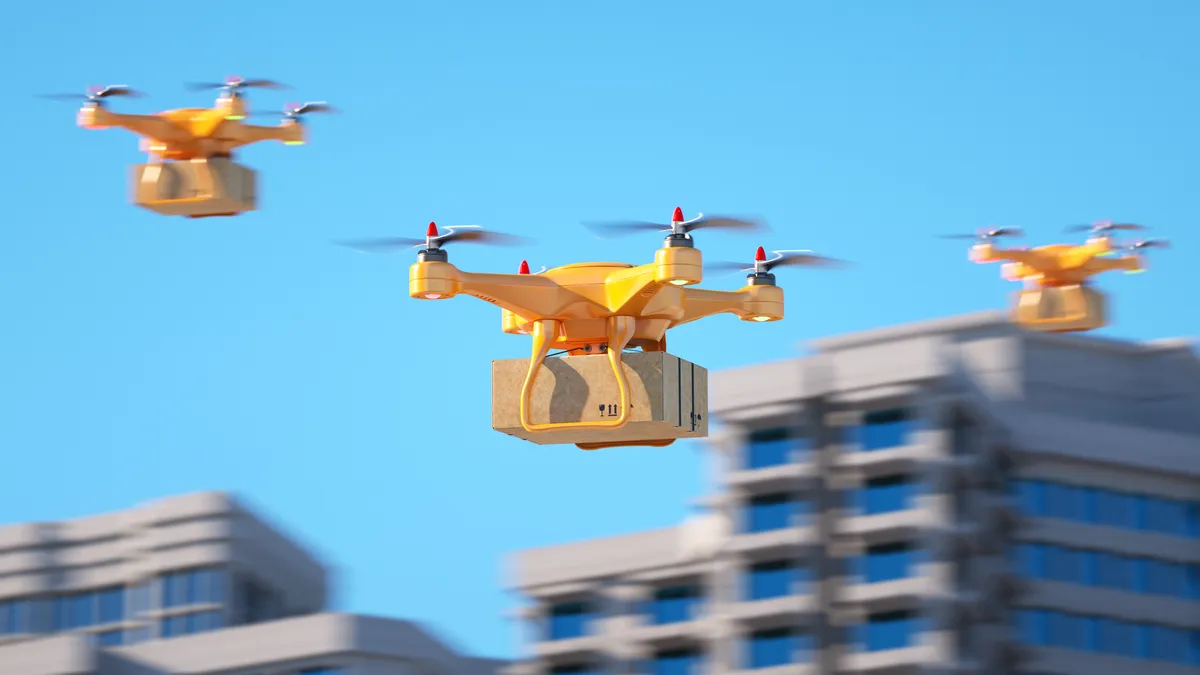The skies may soon be abuzz with drones delivering packages, taking photographs and surveying infrastructure. Since Aug. 24, the Federal Aviation Administration has authorized three companies, including UPS, to fly remotely controlled aircraft out of sight of their operators. A fourth request is expected to be approved soon.
The FAA began regulating small drones in 2016 and launched a pilot program to integrate civil and public drone operations into the nation’s airspace in 2017. But, widescale implementation of commercial drones has been hampered by rules that prohibit operating beyond the visual line of sight of the operator.
In 2020, the FAA launched a program to allow select participants to trial “beyond visual line-of-sight,” or BVLOS, operations. Among the eight lead participants, Virginia Tech studied residential drone delivery in Christiansburg, Virginia. The North Carolina Department of Transportation, in conjunction with Zipline, was authorized to undertake long-range, wide-area commercial drone deliveries. Other drone applications involved utility inspection along transmission lines in Kansas, inspections of power plants in seven states and tests of drone collision-avoidance technology near Reno, Nevada.
The three newly authorized BVLOS operators will use drones in various ways. UPS Flight Forward said in a letter to the FAA that it plans to begin drone operations first in the vicinity of The Villages, Florida, a retirement community where it delivered prescription medicines via drones in 2020. Phoenix Air Unmanned will conduct aerial photography, aerial surveys and powerline and pipeline inspections. Montana-based uAvionix will operate drones in North Dakota to test detect-and-avoid technology provided by Vantis.
“The FAA’s issuance of exemptions needed to conduct and scale BVLOS operations in the near term is a critical step to scaling commercial drone operations,” said Lisa Ellman, executive director of the nonprofit Commercial Drone Alliance, in an email. “These approvals mark an important step forward for the broader industry.”
The National League of Cities says on its website, “Drones have the potential to revolutionize many industries and city services, particularly as their technology advances.” The NLC cites potential uses such as law enforcement, firefighting, inspections, environmental monitoring and disaster management. But in a 2016 report, the NLC also warned: “Drones raise safety, privacy, nuisance and trespassing concerns.”
The Air Line Pilots Association said it supports drone technology, but an ALPA 2015 white paper said safety must be the only determining factor when these operate in “airspace already being used by aircraft with people on board.”
Drone deliveries are expected to top 1 million in 2023, according to Robin Riedel, a McKinsey & Co. partner in the Bay Area office. Major players in the market such as Alphabet’s Wing and Zipline plan to handle millions of deliveries in the coming years. But Riedel also noted, “Many people still worry that delivery drones may generate too much noise, invade privacy, or simply interfere with their enjoyment of a scenic sunset by crisscrossing the sky.”
Privacy concerns are top of mind for Jeramie Scott, senior counsel at the Electronic Privacy Information Center. “In our age of seemingly ubiquitous data collection, people will rightly wonder what surveillance capabilities the drone flying over them has and what data it is collecting,” he said.
Scott added, “As a first step, the FAA should require transparency around BVLOS drone operations that would inform the public of the purpose of the drone operation, the technical capabilities of the drones, whether any data is collected and how collected data will be used. Failure to do so could lead to additional safety issues as people may take matters into their own hands and shoot or otherwise try to take drones down — something we’ve seen happen in the past.”












